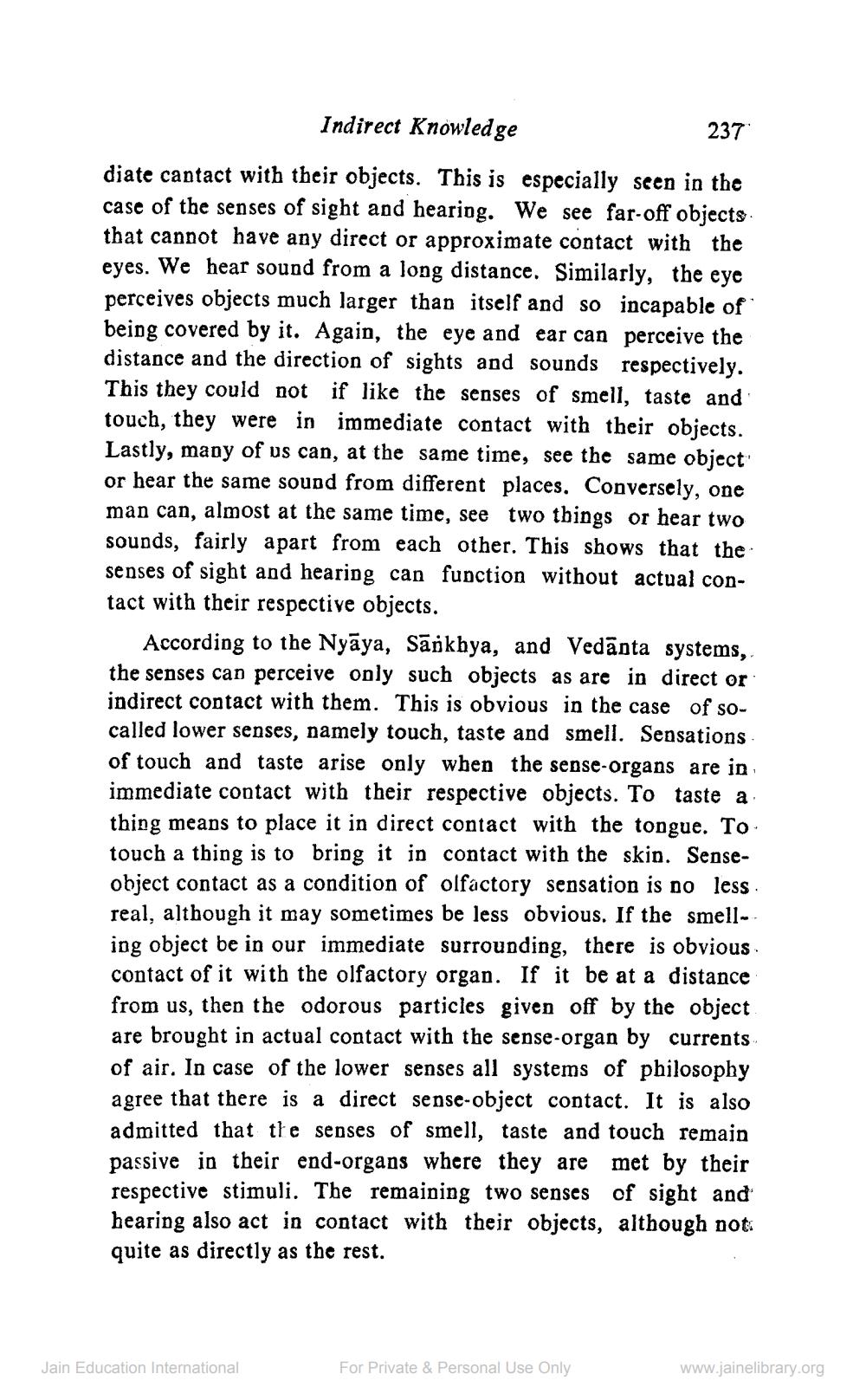________________
Indirect Knowledge
237
diate cantact with their objects. This is especially seen in the case of the senses of sight and hearing. We see far-off objects that cannot have any direct or approximate contact with the eyes. We hear sound from a long distance. Similarly, the eye perceives objects much larger than itself and so incapable of being covered by it. Again, the eye and ear can perceive the distance and the direction of sights and sounds respectively. This they could not if like the senses of smell, taste and touch, they were in immediate contact with their objects. Lastly, many of us can, at the same time, see the same object or hear the same sound from different places. Conversely, one man can, almost at the same time, see two things or hear two sounds, fairly apart from each other. This shows that the senses of sight and hearing can function without actual contact with their respective objects.
According to the Nyāya, Sāökhya, and Vedānta systems, the senses can perceive only such objects as are in direct or indirect contact with them. This is obvious in the case of socalled lower senses, namely touch, taste and smell. Sensations of touch and taste arise only when the sense-organs are in immediate contact with their respective objects. To taste a thing means to place it in direct contact with the tongue. To touch a thing is to bring it in contact with the skin. Senseobject contact as a condition of olfactory sensation is no less real, although it may sometimes be less obvious. If the smelling object be in our immediate surrounding, there is obvious contact of it with the olfactory organ. If it be at a distance from us, then the odorous particles given off by the object are brought in actual contact with the sense-organ by currents of air. In case of the lower senses all systems of philosophy agree that there is a direct sense-object contact. It is also admitted that the senses of smell, taste and touch remain passive in their end-organs where they are met by their respective stimuli. The remaining two senses of sight and hearing also act in contact with their objects, although not quite as directly as the rest.
Jain Education International
For Private & Personal Use Only
www.jainelibrary.org




